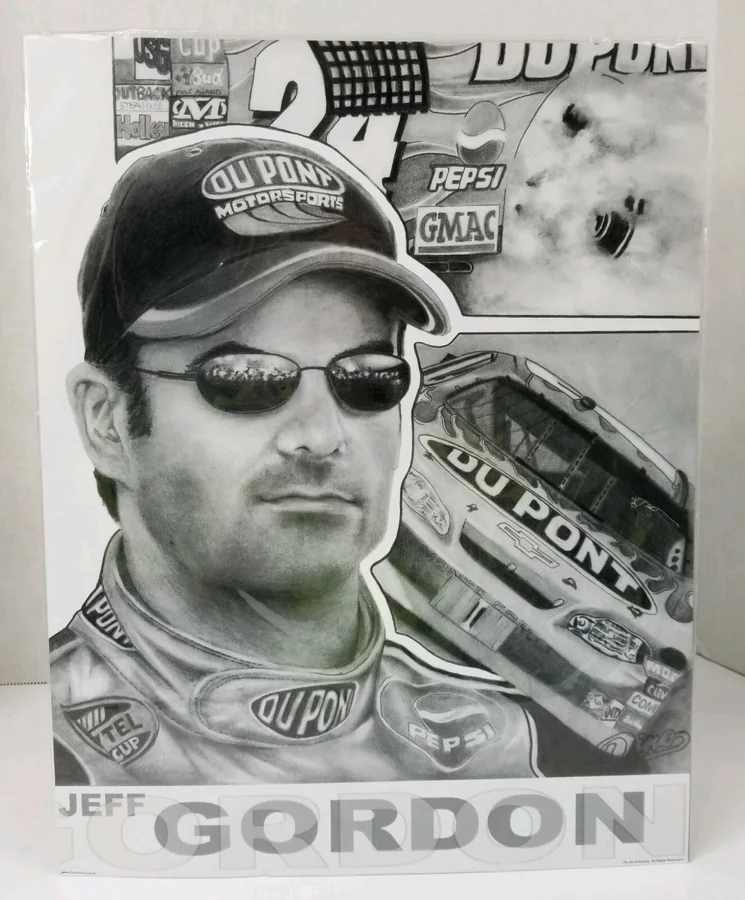Jeff Gordon’s NASCAR career journey is marked by an unexpected pivot in his youth, transforming him from an aspiring IndyCar driver to one of the sport’s greatest legends. This path began in the Midwest and culminated in record-setting victories and a permanent mark on the history of NASCAR.
An Early Passion for IndyCar Leads to a New Direction
At 18, Jeff Gordon believed his future lay with IndyCar. After moving from California to just outside Indianapolis at the age of 14, Gordon aimed to race sprint and midget cars, something not possible for minors in his home state. He rapidly gained recognition in the Midwest racing scene, never letting go of his goal to compete in IndyCar events.
The narrative shifted when Gordon encountered a different form of racing car—a NASCAR stock car. Fresh from his IndyCar environment, he initially saw these vehicles as cumbersome.
After being around (sleek-looking) Indy cars, all my thoughts was stock cars are just big old heavy taxi cabs,
Jeff Gordon joked during a conversation with Kyle Petty on “Dinner Drive.” His skepticism changed dramatically after his first on-track experience.
Until I drove one. When I drove one, I thought, ‘Oh, I’ve got a whole different mindset. It’s a different car, this is high bank tracks, you’re going fast. You’re driving the wheels off this thing.. I realized that first time I drove a stock car, even though it was at the Buck Baker Driving School, I realized this is way closer to what I’ve been doing (in sprints and midgets) than what I’m trying to pursue in anything IndyCar.
This pivotal moment set in motion a rapid transition where Gordon left his IndyCar dreams behind to fully embrace the world of stock car racing.

Accelerated Rise Through NASCAR’s Ranks
Once committed, Gordon’s NASCAR career journey picked up speed. His initial exposure at the Buck Baker Driving School introduced him to Hugh Connerty, then a Busch Series team owner, and brought him into contact with Ray Evernham, a then-unknown crew chief. Gordon soon drove two full-time seasons for team owner Bill Davis, with Evernham rejoining him in his second season. Their teamwork and determination would yield results that few foresaw.
During his second season with Bill Davis, Gordon’s win at Atlanta Motor Speedway attracted significant attention from industry leaders. It was this performance that earned him a conversation with Rick Hendrick, owner of Hendrick Motorsports.
Rick asked me to come down to his office in Charlotte,
Jeff Gordon remembered.
I went (and) I’ll never forget. I pull up to the building, come in this side door, like it’s all secretive and stuff. And here’s Rick sitting behind the desk, and we just sat down for an hour, 30 minutes, whatever it was. And I was like, ‘Holy crap, I’m sitting in front of Rick Hendrick. Like, is this really true? Is this really possible? Is this gonna happen?
This meeting with Hendrick—surreal and full of anticipation—would soon have lasting repercussions not just for Gordon, but for NASCAR itself.
Choosing Hendrick Motorsports and Securing His Legacy
Soon after, Bill Davis offered Gordon and Evernham a new contract with the goal of bringing them both to the Winston Cup Series. However, Gordon had already made a different commitment. He and Evernham had signed contracts with Hendrick Motorsports for the 1993 season, marking the formal start of his journey among the sport’s best drivers.
Leaving Davis behind was a difficult but necessary decision—a move that would propel Gordon into the annals of NASCAR history. Jeff Gordon’s NASCAR career journey led him to 93 Cup Series wins, placing him only behind Richard Petty and David Pearson in all-time victories. His induction into the NASCAR Hall of Fame and status as potential successor to Rick Hendrick highlight the immense impact he’s had on the sport.
For IndyCar, Gordon’s decision represented a missed opportunity, but for NASCAR, it was a transformative gain.
The Enduring Impact of Jeff Gordon’s Decisions
Gordon’s ascent transformed both his destiny and the shape of NASCAR’s competitive landscape. The collaborations with key figures like Ray Evernham, and the faith shown by Rick Hendrick, were instrumental in this rise. The journey that began with uncertainty and hesitation matured into a story of remarkable tenacity and accomplishment, serving as inspiration to future generations of race car drivers and fans alike. As the racing world continues to evolve, Gordon’s influence endures, ensuring that his journey will be studied and celebrated for years to come.

